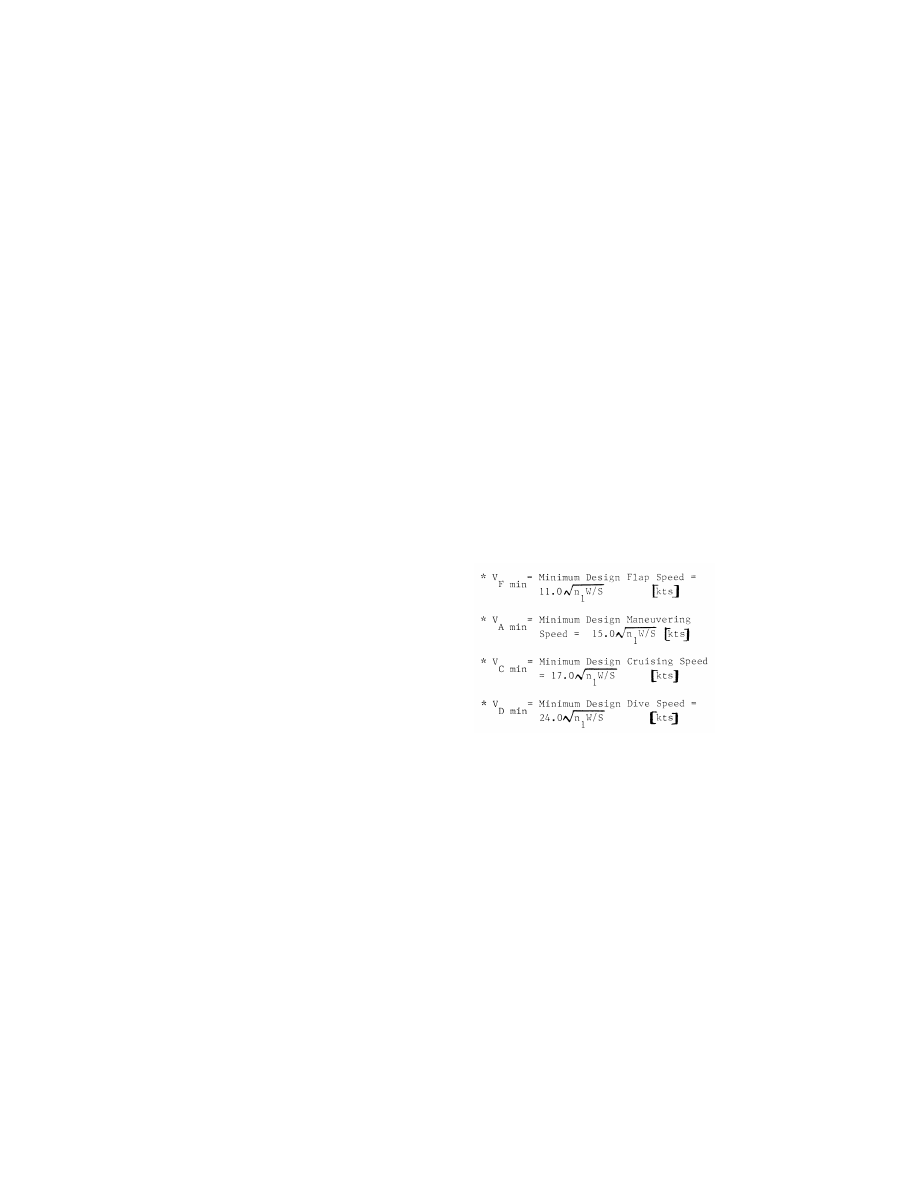
332
14 CFR Ch. I (1–1–14 Edition)
§ 23.1589
(11) The altimeter system calibration
required by § 23.1325(e).
[Doc. No. 27807, 61 FR 5194, Feb. 9, 1996, as
amended by Amdt. 23–62, 76 FR 75763, Dec. 2,
2011]
§ 23.1589
Loading information.
The following loading information
must be furnished:
(a) The weight and location of each
item of equipment that can be easily
removed, relocated, or replaced and
that is installed when the airplane was
weighed under the requirement of
§ 23.25.
(b) Appropriate loading instructions
for each possible loading condition be-
tween the maximum and minimum
weights established under § 23.25, to fa-
cilitate the center of gravity remain-
ing within the limits established under
§ 23.23.
[Doc. No. 4080, 29 FR 17955, Dec. 18, 1964, as
amended by Amdt. 23–45, 58 FR 42167, Aug. 6,
1993; Amdt. 23–50, 61 FR 5195, Feb. 9, 1996]
A
PPENDIX
A
TO
P
ART
23—S
IMPLIFIED
D
ESIGN
L
OAD
C
RITERIA
A23.1
General.
(a) The design load criteria in this appen-
dix are an approved equivalent of those in
§§ 23.321 through 23.459 of this subchapter for
an airplane having a maximum weight of
6,000 pounds or less and the following con-
figuration:
(1) A single engine excluding turbine pow-
erplants;
(2) A main wing located closer to the air-
plane’s center of gravity than to the aft, fu-
selage-mounted, empennage;
(3) A main wing that contains a quarter-
chord sweep angle of not more than 15 de-
grees fore or aft;
(4) A main wing that is equipped with trail-
ing-edge controls (ailerons or flaps, or both);
(5) A main wing aspect ratio not greater
than 7;
(6) A horizontal tail aspect ratio not great-
er than 4;
(7) A horizontal tail volume coefficient not
less than 0.34;
(8) A vertical tail aspect ratio not greater
than 2;
(9) A vertical tail platform area not great-
er than 10 percent of the wing platform area;
and
(10) Symmetrical airfoils must be used in
both the horizontal and vertical tail designs.
(b) Appendix A criteria may not be used on
any airplane configuration that contains any
of the following design features:
(1) Canard, tandem-wing, close-coupled, or
tailless arrangements of the lifting surfaces;
(2) Biplane or multiplane wing arrange-
ments;
(3) T-tail, V-tail, or cruciform-tail (+) ar-
rangements;
(4) Highly-swept wing platform (more than
15-degrees of sweep at the quarter-chord),
delta planforms, or slatted lifting surfaces;
or
(5) Winglets or other wing tip devices, or
outboard fins.
A23.3
Special symbols.
n
1
=Airplane Positive Maneuvering Limit
Load Factor.
n
2
=Airplane Negative Maneuvering Limit
Load Factor.
n
3
=Airplane Positive Gust Limit Load Fac-
tor at
V
C.
n
4
=Airplane Negative Gust Limit Load Fac-
tor at
V
C.
n
flap
=Airplane Positive Limit Load Factor
With Flaps Fully Extended at
V
F.
A23.5
Certification in more than one category.
The criteria in this appendix may be used
for certification in the normal, utility, and
acrobatic categories, or in any combination
of these categories. If certification in more
than one category is desired, the design cat-
egory weights must be selected to make the
term
n
1
W constant for all categories or
greater for one desired category than for
others. The wings and control surfaces (in-
cluding wing flaps and tabs) need only be in-
vestigated for the maximum value of
n
1
W, or
for the category corresponding to the max-
imum design weight, where
n
1
W is constant.
If the acrobatic category is selected, a spe-
cial unsymmetrical flight load investigation
in accordance with paragraphs A23.9(c)(2)
and A23.11(c)(2) of this appendix must be
completed. The wing, wing carrythrough,
and the horizontal tail structures must be
checked for this condition. The basic fuse-
lage structure need only be investigated for
the highest load factor design category se-
lected. The local supporting structure for
dead weight items need only be designed for
the highest load factor imposed when the
VerDate Mar<15>2010
10:12 Mar 18, 2014
Jkt 232046
PO 00000
Frm 00342
Fmt 8010
Sfmt 8002
Y:\SGML\232046.XXX
232046
EC28SE91.020</MATH>
pmangrum on DSK3VPTVN1PROD with CFR